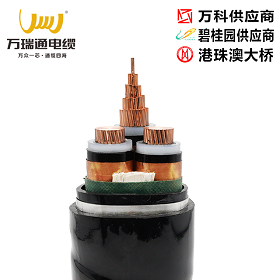In order to better understand and apply wires and cables, this article will deeply analyze the three core components of wire and cable: model representation, specification and standard number.

First, the meaning of wire and cable model
The model representation of wires and cables is the identification mark of their identity, which is usually composed of seven parts, including category, use code, conductor code, insulation layer code, sheath code, feature code, and armor layer code. In addition, some special models include a derived code. Next, we will explain each code name in detail.
1. Category and use code: This part of the code reflects the use and characteristics of wires and cables, such as A for installation wire, B for insulated wire, C for marine cable, etc.
2. Conductor code: usually indicates the conductor material, such as T stands for copper wire, L stands for aluminum core.
3. Insulation code: reflects the type of insulation material, such as V stands for PVC plastic, YJ stands for XLPE insulation, X stands for eraser, etc.
4. Sheath code: refers to the protective material of the outer layer of the cable, such as V stands for PVC sleeve, Y stands for polyethylene, etc.
5. Feature code: It reflects some special properties or structural characteristics of the cable, such as B stands for flat type, R stands for soft, etc.
6. Armor layer code: indicates the armor type of the cable, such as 2 represents double steel belt, 3 represents thin round steel wire, etc.
7. Outer sheath code: refers to the material of the outer sheath of the cable, such as 1 represents the fiber layer, 2 represents the PVC sheath, 3 represents the PE sheath, etc.
2. Examples of wires and cables and power cables for electrical equipment
The following are some examples of the types of wires and cables used in electrical equipment and power cables to help readers better understand the composition of the models.
VV: copper conductor PVC insulated PVC sheathed power cable.
YJV22: copper core XLPE insulated steel tape armored PVC sheathed power cable.
KVV: PVC insulated PVC sheathed control cable.
BV: copper conductor PVC insulated wire.
RV: General purpose single-core soft conductor unsheathed cable.
3. Wire and cable specifications
The specifications of wires and cables are composed of three parts: rated voltage, number of cores and nominal cross-section.
1. Rated voltage: reflects the voltage level used in cable design, such as 300/500V, 0.6/1kV, etc.
2. Number of cores: According to the actual needs, the power cable mainly has 1, 2, 3, 4, 5 cores, the wire is mainly 1~5 cores, and the control cable has 1~61 cores.
3. Nominal cross-section: It is the approximate value of the cross-section of the guide, and the conductor cross-section uniformly stipulated by our country has a variety of specifications, such as 0.5, 0.75, 1, 1.5, 2.5, etc.
Fourth, the standard number
Wire and cable production is subject to national and industry standards, and the following are some of the relevant standard numbers:
1.GB 5023-1997: PVC insulated cable with rated voltage of 450/750V and below.
2.JB 8734-1998: PVC insulated cables, wires and flexible wires with rated voltage of 450/750V and below.
3. GB 5013-1997: rated voltage 450/750V and
+86 136-3137-9141
email:
wanruitong8@gmail.com




